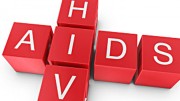By: Brook Rosini/Special to The Rainbow Times–
For those of us who grew up in the 90s, we remember sex ed classes with videos that included testimonials from people who looked just like us—but a little older—about how they became infected with HIV. We remember haunting photographs and heart-rending stories chronicling the short lives of those diagnosed with the virus. We remember Pedro from The Real World, a sweet soul who came into our living rooms weekly via MTV and humanized the illness in ways those sex ed tapes couldn’t. We remember that being diagnosed with HIV was a death sentence.
Things certainly have changed. The good news is that contracting HIV does not have to be a death sentence anymore. The bad news is that HIV infection rates among American youth are actually increasing. And that dichotomy of good and bad essentially sums up the news we heard about HIV/AIDS in 2012.
Indeed, last year proved to be a complex one for news about the epidemic, with both positive and negative statistics and figures being reported by leading organizations working in the fields of treatment and prevention.
In July, for the first time in twenty-two years, the International AIDS Conference returned to the United States, seeing 24,000 participants from 183 countries gather in Washington, D.C. to present the latest research and discuss measures needed to ensure that financial support keeps pace with scientific advancements in the fight against the epidemic. The tenor of publications from the conference tended to be optimistic, as was the UN, stating in a report released in November of last year that ending AIDS is a feasible goal for the near future within the next generation.
At the same time, a 2012 report by the United Nations Programme on AIDS stated that deaths by AIDS had dropped from 2.3 million in 2005-2006 to 1.7 million in 2011. Meanwhile, the number of people living with HIV increased by 18% from 2001-2011 – a combination of the longer lifespan of those living with the virus and new infections.
In fact, while UNAIDS reported last year that new HIV infection rates dropped by half in low- and middle-income countries around the globe, the United States Centers for Disease Control and Prevention reported in November that of the 50,000 new HIV infections in the U.S., young people aged 12-24 make up more than a quarter of that number, with 60% of those individuals unaware that they are infected.
The conclusion one can draw is twofold. On the one hand, treatment for the human immunodeficiency virus has advanced to the point that it need not develop into acquired immunodeficiency syndrome, allowing those affected to live to a nearly normal life expectancy if treatment is begun soon after infection with the virus. But on the other hand, the alarming story told by new infection rates indicates that something must be going awry in the efforts against the epidemic.
What could be at the root of the issue of high infection rates among young people?
Speculation might lead one to believe that part of the blame should go the nation’s public schools, whose lack of robust sexual education programs could indicate that young people might not be receiving information about HIV in meaningful ways. According to the Guttmacher Institute, only 20 states mandate both sexual education and HIV education in public schools. And while 33 states total mandate HIV education, 13 mandate HIV education only – meaning that the virus is discussed without including it in a more general discussion of sexual health and sexual awareness. This amounts to less than half the states in this country’s public school system offering comprehensive sexual education, leaving countless young people in the dark about sexual issues – and the realities of sex’s relationship to HIV infection.
Yet although these figures are troubling, and these policies are problematic, they might not fully answer the question.
New infection rates among youth are especially high in certain demographics. Specifically, young gay and bisexual men and African American men tend to be at greatest risk for infection, making up the lion’s share of new infection statistics. Young men who have sex with men comprise 72% of new infections, and young African American men total 50% of new infections, according to the Centers for Disease Control and Prevention report released November 27, 2012.
Dr. Ralph Vetters, MD, of the Fenway Institute’s Sidney Borum, Jr. Health Center, is an expert in HIV research, treatment, and prevention, especially in this particular high-risk demographic. Dr. Vetters oversees programs that “specialize in caring for youth and young adults ages 12 to 29 who may not feel comfortable going anywhere else, including those who are LGBT or just figuring things out; homeless or living on the streets; struggling with substance use or abuse; sex workers; or living with HIV/AIDS,” according to a recent press release from Fenway.
Dr. Vetters was able to provide some answers as to why these groups see higher infection rates, explaining that there is a certain amount of fatalism among the young male gay population regarding the virus, and that because the number of people who have HIV in those populations is already higher, risky interactions are more likely to involve exposure to HIV. This in turn means that the number of people with new infections is higher, meaning that they have more of the virus in their blood, making it more transmissible, even via only relatively small amounts of blood or seminal fluid. Dr. Vetters refers to this as the concept of “community viral load.”
In addition, although young gay black men do not engage in different kinds of sexual activity than young gay white men, the community viral load in the population is higher, according to Dr. Vetters. “This is in part a function of the way the white gay community has organized and created venues for testing and treatment, part a function of racism within the gay community so that black gay men aren’t integrated into those testing and treatment venues, part a function of the economy and the fact that the young black population is less likely to have health insurance and therefore less likely to be engaged in care and getting their HIV disease managed and treated: treatment reduces the community viral load.”
When asked how these issues might be addressed, Dr. Vetters pointed to the strategies of programs at Fenway Institute. According to Dr. Vetters, reducing barriers to testing and treatment is key to the effort. Working closely with local youth service organizations like BAGLY (Boston Area Gay and Lesbian Youth) and Boston GLASS (Gay and lesbian adolescent support services) enables the Borum Health Center to uniquely engage with HIV-positive youth. “By working closely with these organizations, the Borum has developed a reputation of understanding the lives these youth lead – we are non-judgmental, sex-positive and focus on harm-reduction – supporting behaviors over time that will reduce exposure to the community viral load. Youth who test positive are referred to us for management. We provide free STD and HIV screenings; we help people get signed up for health insurance; we offer an environment that is youth focused – not adult or baby focused in the way that pediatricians’ offices or adult care clinics can turn off youth. We are able to be the first and most successful place where HIV+ youth can get into regular health care.”
In addition, three other programs at Fenway – Project PrEPare, SMILE, and Connect 2 Protect – focus specifically on this particular high-risk population of young gay and bisexual men of color, and act in complementary ways to reduce new infections, improve treatment, reduce the community viral load, and attack head-on some of the structural barriers in the community that have limited the efficacy of previous attempts at intervention in this demographic.
However, Dr. Vetters cautions, “When we see that 26% of all the new cases of HIV nationwide are from this relatively small segment of the overall population, it means that there is, in a sense, a different kind of epidemic going on among young, gay and bisexual African American males. It implies that the public health approaches, community outreach programs, and clinical treatment plans that have been working to some extent for the rest of the population are not working for this particular population and so we have to rethink our entire game.”
But amidst all the data and numbers, all the science and medicine and research papers, and the 34 million people living with HIV around the world, there are two things everyone seems to agree on. The first is that great strides have been made in the thirty years since the epidemic first came to national attention in the early 1980s. And the second is that only through coordinated efforts to expand HIV prevention and treatment initiatives, integrate HIV programs into broader health services, maintain funding, and improve human rights across vulnerable populations will the international community begin to end the AIDS epidemic.








